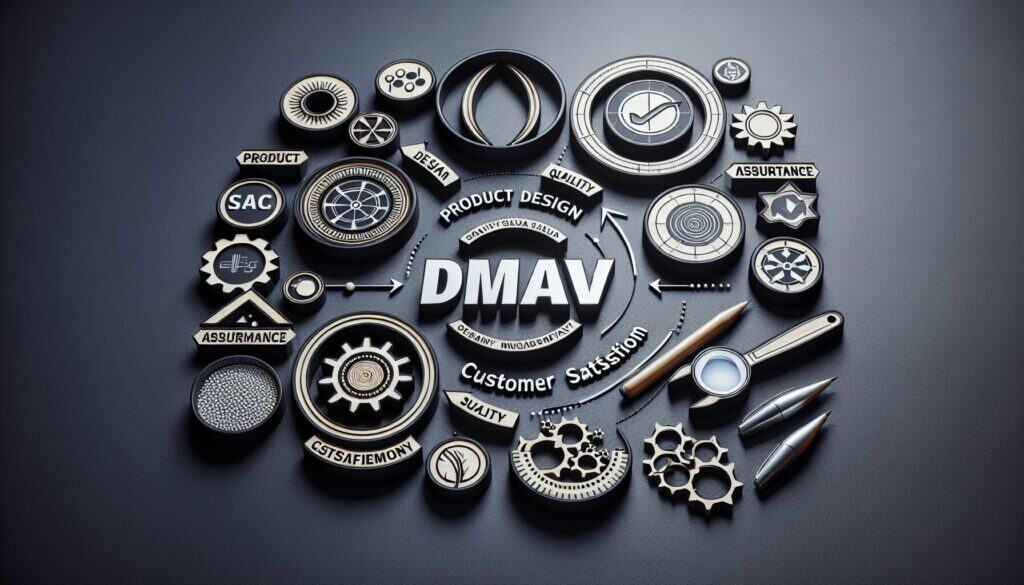DMADV (Define Measure Analyze Design Verify): a 六西格玛 methodology used to design new products, services, or processes to meet customer requirements and business objectives with high quality.
- 方法: 客户与营销, 构思, 产品设计
DMADV

- 持续改进, 客户体验, 六西格玛设计(DfSS), 设计过程, 流程改进, 产品开发, 质量功能展开(QFD), 质量管理, 六西格玛
DMADV
- 持续改进, 客户体验, 六西格玛设计(DfSS), 设计过程, 流程改进, 产品开发, 质量功能展开(QFD), 质量管理, 六西格玛
目标
如何使用
- 五阶段方法:确定项目目标和客户交付成果;测量并确定客户需求和规格;分析工艺选项以满足客户需求;设计工艺/产品以满足客户需求;验证设计性能和满足客户需求的能力。
优点
- 从一开始就注重设计质量;数据驱动方法;旨在有效满足客户要求。
缺点
- 可能需要大量资源和时间;需要结构化的方法和熟练的团队成员;对于简单的设计任务来说可能过于复杂。
类别
- 精益西格玛, 产品设计, 质量
最适合:
- 设计新产品或流程,或重新设计现有产品或流程,以六西格玛质量水平满足客户需求。
The DMADV methodology finds extensive application across various industries such as automotive, aerospace, consumer electronics, and healthcare, particularly when organizations seek to innovate or redesign products and services. It is commonly used during the initial phases of product development projects where the focus is on ensuring that customer requirements are met with high precision. Teams comprising product managers, engineers, designers, and quality control experts initiate this approach, collaborating closely to define project goals and customer deliverables in the Define phase. During the Measure phase, empirical data collection is emphasized, allowing teams to quantify customer needs and assess current specifications against those needs. When analyzing the available process options in the Analyze phase, teams utilize advanced statistical tools to evaluate feasibility and selection based on cost, performance, and quality metrics. The Design phase then involves creating prototypes or simulations, while the comprehensive testing in the Verify phase ensures that the final product not only meets but also exceeds customer expectations. This methodological approach significantly enhances product quality and customer satisfaction by embedding quality considerations early in the development process. It also minimizes the costs associated with rework and warranty claims, establishing a strong foundation for future innovations that adapt to evolving consumer demands. As such, DMADV serves as a framework for systematic decision-making where data-driven conclusions inform each phase, fostering a culture of continual improvement within organizations.
该方法的关键步骤
- Define project goals and customer deliverables.
- Measure and determine customer needs and specifications.
- Analyze process options to meet customer needs.
- Design the process/product to meet customer needs.
- Verify the design performance and ability to meet customer needs.
专业提示
- Utilize advanced simulation tools during the Analyze phase to predict performance outcomes accurately under various scenarios.
- Integrate voice of the customer (VoC) data into iterative 设计评论, ensuring that evolving customer needs influence design decisions continuously.
- Conduct failure mode and effects analysis (FMEA) during the Design phase to identify potential issues and incorporate redundancy measures early in the process.
历史背景
1980
1980
1980
1986
1987
1990
1990
1972
1980
1980
1986
1986
1987-03
1990
1990
(如果日期不详或不相关,例如 "流体力学",则对其显著出现的时间作了四舍五入的估计)。















相关文章
肌肉骨骼不适调查表
多变量测试(MVT)
多元回归分析
动作捕捉系统
MoSCoW 方法
情绪中值测试